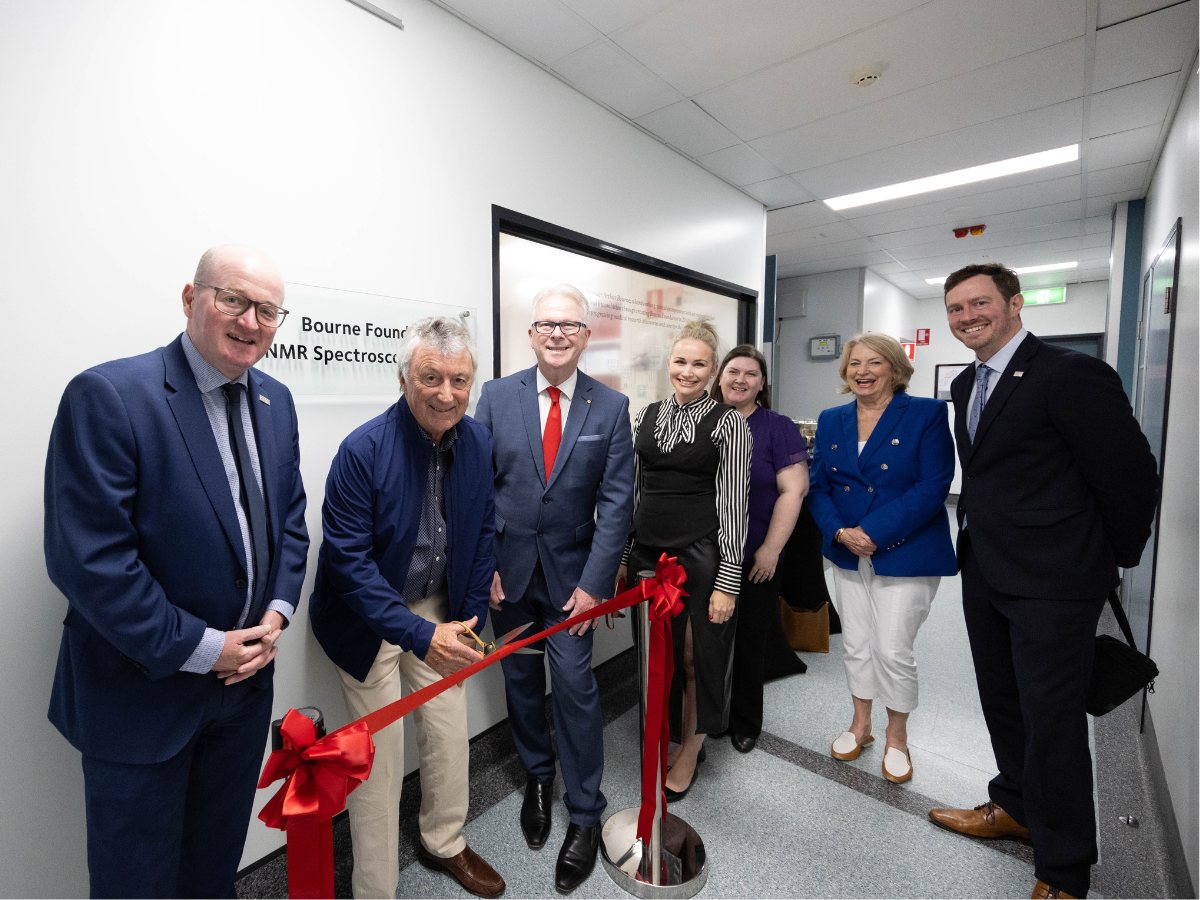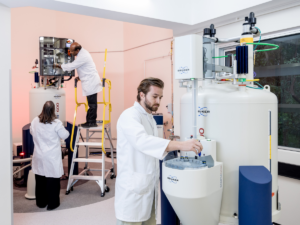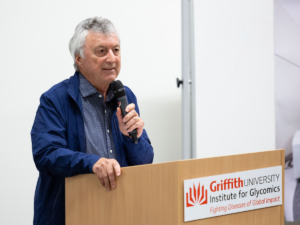
We’re excited to announce the launch of the Bourne Foundation Nuclear Magnetic Resonance (NMR) Facility, an institute core facility that has been rebuilt to house the world’s latest NMR instrumentation. With a significant donation from Bourne Foundation.
The Bourne Foundation Nuclear Magnetic Resonance (NMR) Spectroscopy Facility now houses a brand new 600MHz NMR Spectrometer with a QCI-F Cryoprobe, the first to be installed Australia.
This spectrometer substantially increases the capacity for high throughput screening of samples and the QCI-F Cryoprobe has enhanced our capability in the emerging field of fluorine-19 NMR, which is an increasingly important drug discovery tool. The facility now houses three NMR spectrometers, making way for the Institute to explore new NMR applications in the health and medical space. With this exciting facility upgrade, research scientists will also have the ability to work with clinicians to obtain metabolomic profiles of blood, serum and urine samples for the purpose of biomarker discovery, early diagnostics, drug screening and numerous other medical applications.

“NMR Spectroscopy can provide extensive information about the structure, dynamic and chemical environment of atoms and molecules”, says , Institute for Glycomics research leader and expert in NMR spectroscopy, structure guided drug design and medicinal chemistry. “We use NMR spectroscopy regularly to analyse the interaction of small ligands such as glycans with their target proteins, cells, and even intact virus particles, bacteria, or parasites. This technique is not only vital for gaining a deeper understanding of these important interactions but also furnishes fundamental knowledge crucial to the development of ground-breaking anticancer and antiviral drugs.
Valued supporters of the Institute for Glycomics, Bourne Foundation, funded the purchase of the new instrument in memory of their founder, Mr Arthur Bourne, a hard-working entrepreneur with an engineering flair who was committed to playing his part in progressing medical discoveries and cures for the future of global health. He understood the necessity of investment in infrastructure to the advancement and progression of research.
“We see this capital expenditure as a vital piece of the research puzzle which will provide significant assistance in discoveries made at the Institute for years to come,” confirmed Sid Catlin, Director, Bourne Foundation. “We are honoured to contribute and play our part in world-leading research.”

The facility was officially opened by Professor Mark von Itzstein AO, Director, Institute for Glycomics, Mr Marcus Ward, Vice President (Advancement), Griffith University and Mr Sid Catlin, Director, Bourne Foundation. Official proceedings included a tour of the state-of-the-art facility.
“This facility is critical to the Institute’s drug and vaccine success. The tremendous support from the Bourne Foundation will continue to propel our discoveries well into the future, contributing to global health for generations to come,” said Professor Mark von Itzstein AO, Director, Institute for Glycomics.
More detailed information on Magnetic Resonance Spectroscopy can be read .
A timeline of the facility refurbishment, documented by Dr Catherine Tindal, Technical Operations Officer, Institute for Glycomics, can be viewed .








